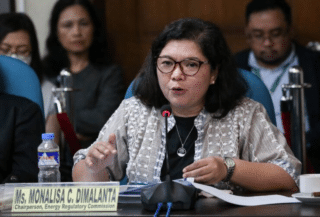The value of metal production in the country dropped by nearly a fifth last year due to taxation issues, delays in mining legislation that would pave the way for new projects, the suspension of some large operations and the continued opposition of certain sectors to various forms of mining.
Data on 2012 metallic mineral production from the Mines and Geosciences Bureau (MGB) showed that the total output value plunged 18.04 percent to P100.8 billion in 2012 from P122.98 billion in 2011.
MGB director Leo Jasareno said that metal prices were generally lower in 2012 than in the previous year. However, as per MGB data, the decline in the value of the Philippines’ metal production was largely due to lower documented output especially of gold, copper and other metals. Jasareno was tightlipped on the role of delays in the ratification of a mineral revenue-sharing legislation that the interagency Mining Industry Coordinating Council (MICC) had targeted to be ready by June this year.
Gold output value dropped 44 percent to P35 billion from P63 billion, MGB said in its 2012 report, mostly because of small-scale miners shifting to nondocumented buyers. The MGB said in its report that the Bangko Sentral ng Pilipinas (BSP) reported a 93-percent plunge in the “documented output” of small-scale miners, as reflected by purchases of the central bank. This pulled down overall gold production value.
“The imposition by the Bureau of Internal Revenue (BIR) of the collection of the 2-percent excise tax and 5-percent creditable withholding tax from small-scale gold producers/traders pursuant to Revenue Regulations No. 6-2012 dated April 2, 2012, caused producers/traders to sell their gold products to other buyers,” the MGB reported.
Nickel and chromite made hefty gains of 36 percent and 52 percent, respectively, but not enough to make up for the losses in other minerals. “In terms of percentage contribution to the total production value, nickel sulphides and direct-shipping ore continued to rule the production scene with a lion’s share of 46 percent or P46.03 billion,” the MGB reported.
Gold followed with a 35-percent share at P35 billion. Copper trailed behind, contributing 15 percent or P15.55 billion (down 19 percent from P19 billion). The rest came from silver (up 20 percent to P2.5 billion), zinc (down 24 percent to P791.8 million), chromite (up 52 percent to P221 million) and iron (down 15 percent to P607 million).
In 2012, among those that joined the production stream were the Siana gold project of Greenstone Resources Corp in Surigao del Norte; the Sta. Cruz nickel venture of Eramen Minerals Inc. in Zambales; the nickel-chromite project of Sinosteel Philippines H.Y. Mining Corp. on Dinagat island, and the Camachin iron ore project of Ore Asia Mining and Development Corp. in Bulacan.
In contrast, among those that were suspended in 2012 were the Padcal copper-gold project of Philex Mining Corp. in Benguet province; the Nonoc nickel project of Shuley Mines Inc./Pacific Nickel Philippines Inc. in Surigao Del Norte; the Leyte magnetite project of Nicua Corp. in Leyte, and the Paracale gold project of Johson Gold Mining Corp. in Camarines Norte.
Investors have long been waiting for a draft bill on revenue sharing, which MICC officials from the Finance and Energy departments said might set the government’s share at 7 to 10 percent of gross earnings and windfall earnings of mining firms. Once approved, the enlarged government share from mining revenues would replace the 2-percent excise tax as well as other taxes imposed on mining firms such as corporate income tax, customs duties and fees on imported capital equipment. It remains to be seen, however, whether the proposed expanded government share would be acceptable to local and foreign investors who have already started exploring mining opportunities in other countries.


